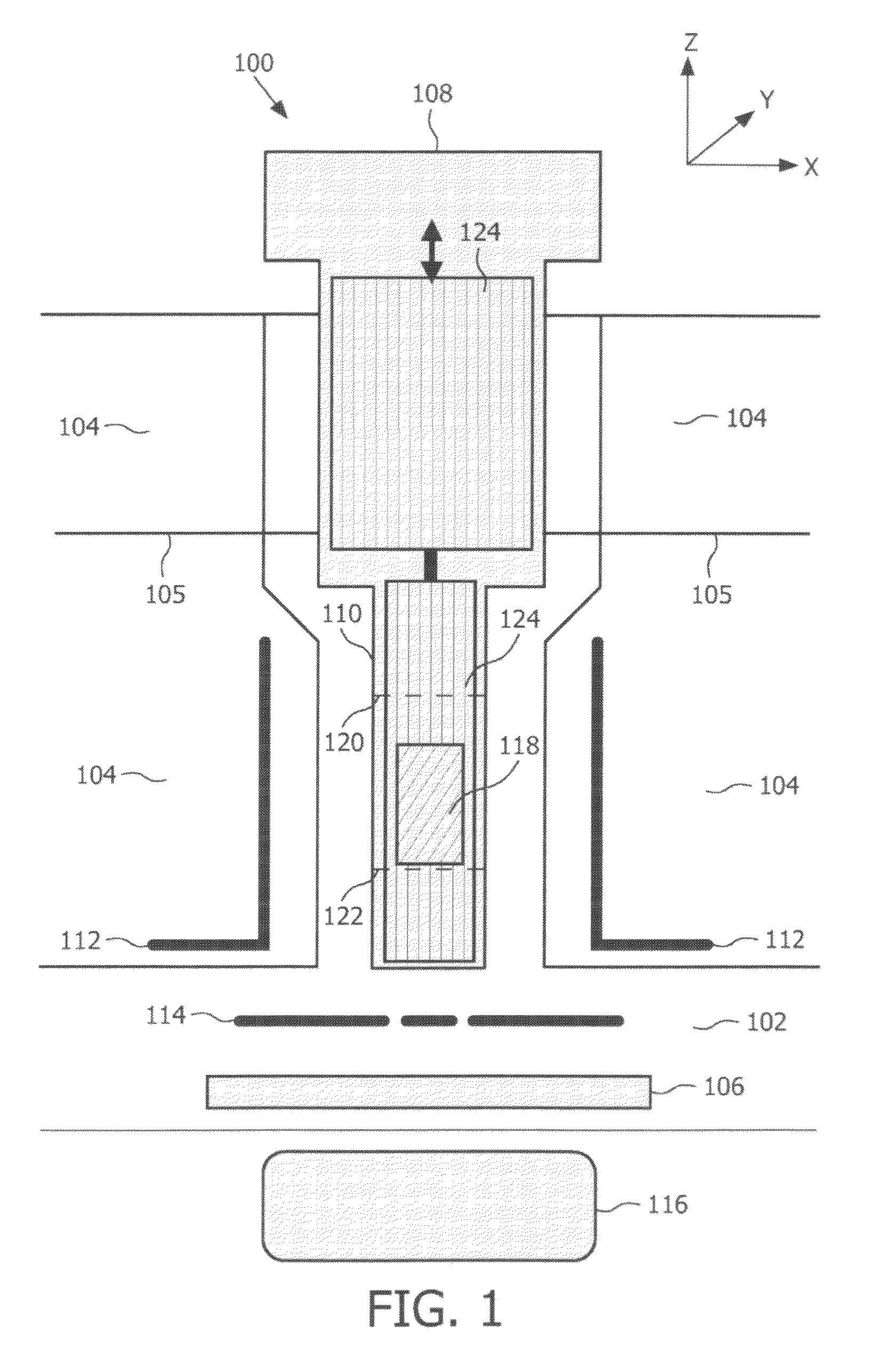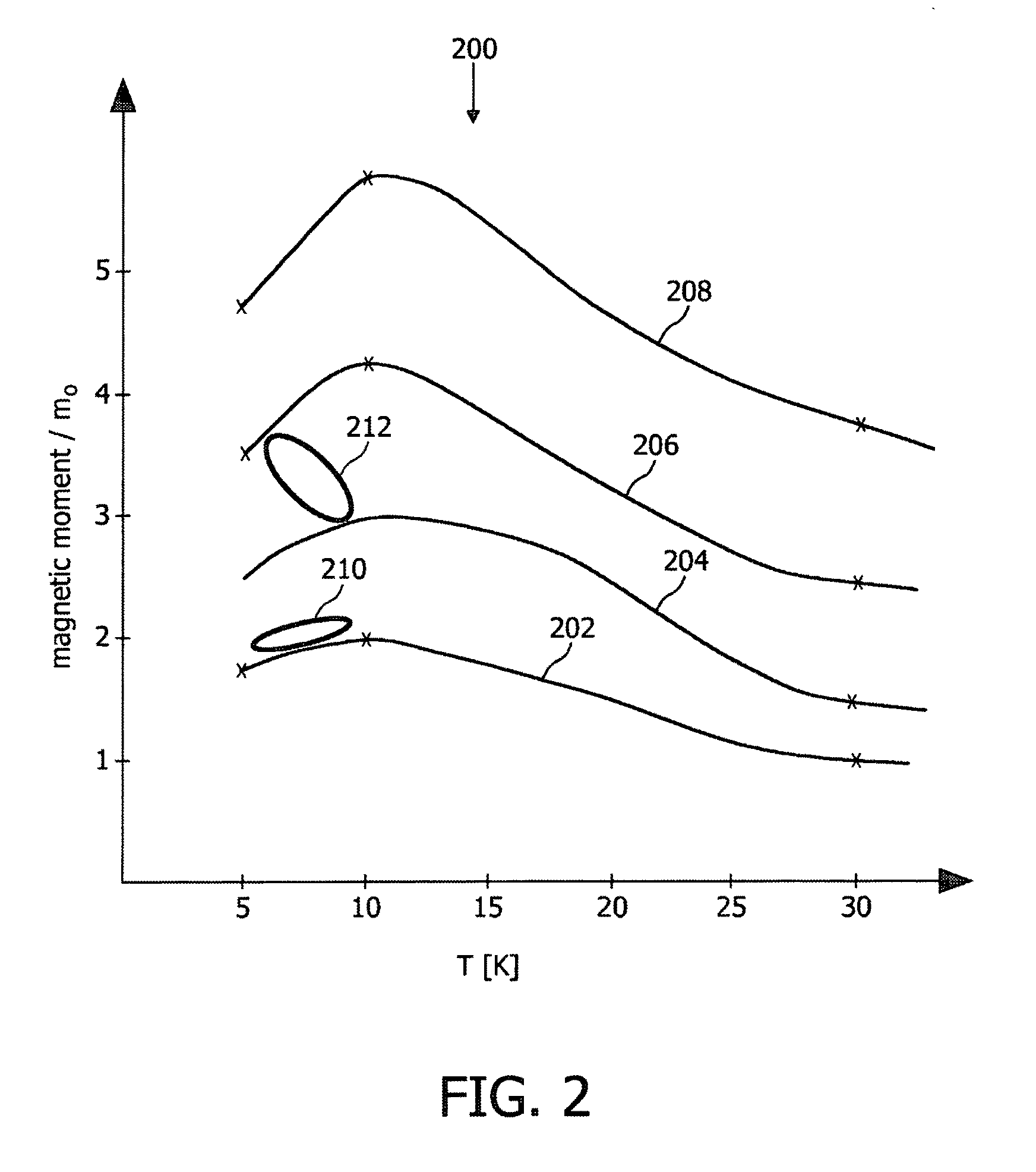Ferromagnetic shield for magnetic resonance imaging
a magnetic resonance imaging and magnetoelectric shield technology, applied in the field of magnetoelectric shielding, can solve problems such as noise sources, achieve the effects of improving the cooling performance of cryoelectric heaters, reducing noise sources, and increasing the life of cryoelectric heaters
- Summary
- Abstract
- Description
- Claims
- Application Information
AI Technical Summary
Benefits of technology
Problems solved by technology
Method used
Image
Examples
Embodiment Construction
[0043]FIG. 1 illustrates a cross section of the cryocooler assembly 100, where the cryocooler 108 is located in the bore formed by the vacuum area 104. A radiation shield 105 at a temperature of about 20 Kelvin and located inside the vacuum area 104 shields the colder parts of the assembly, e.g. the cooling liquid reservoir 102, from thermal radiation. The second stage 110 of the cryocooler 108 featuring a narrow, slab like geometry whose distal end, i.e. the lower portion, is in thermal contact with the cooling liquid reservoir 102. The cooling liquid, which is e.g. liquid helium, provides cooling of the superconductive coil or superconductive magnet 106 for generating a highly uniform magnetic field for magnetic resonance imaging of an imaging area 116. As illustrated in the embodiment, the cryocooler assembly 100 has a ferromagnetic shield 112 surrounding the second stage 110 of the cryocooler 108 and hence surrounding the rare-earth regenerator 118.
[0044]The rare-earth regenerat...
PUM
 Login to View More
Login to View More Abstract
Description
Claims
Application Information
 Login to View More
Login to View More - R&D
- Intellectual Property
- Life Sciences
- Materials
- Tech Scout
- Unparalleled Data Quality
- Higher Quality Content
- 60% Fewer Hallucinations
Browse by: Latest US Patents, China's latest patents, Technical Efficacy Thesaurus, Application Domain, Technology Topic, Popular Technical Reports.
© 2025 PatSnap. All rights reserved.Legal|Privacy policy|Modern Slavery Act Transparency Statement|Sitemap|About US| Contact US: help@patsnap.com



